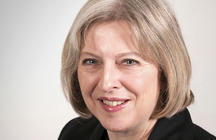Ben Wallace – 2022 Update on the Situation in Ukraine
The statement made by Ben Wallace, the Secretary of State for Defence, in the House of Commons on 25 April 2022.
It is 61 days since Russia invaded Ukraine, and 74 days since my Russian counterpart assured me that the Russian army would not be invading. As the invasion approaches its ninth week, I want to update the House on the current situation and the steps that we are taking to further our support for the Ukrainian people.
It is our assessment that approximately 15,000 Russian personnel have been killed during their offensive. Alongside the death toll are the equipment losses. A number of sources suggest that, to date, over 2,000 armoured vehicles have been destroyed or captured. That includes at least 530 tanks, 530 armoured personnel carriers, and 560 infantry fighting vehicles. Russia has also lost more than 60 helicopters and fighter jets. The offensive that was supposed to take a maximum of a week has now taken weeks. Last week Russia admitted that the Slava-class cruiser Moskva had sunk. That is the second key naval asset that the Russians have lost since invading, and its loss has significantly weakened their ability to bring their maritime assets to bear from the Black sea.
As I said in my last statement, Russia has so far failed in nearly every one of its objectives. In recognition of that failure, the Russian high command has regrouped, reinforced and changed its focus to securing the Donetsk and Luhansk oblasts. A failure of the Russia Ministry of Defence command and control at all levels has meant that it has now appointed one overall commander, General Dvornikov. At the start of this conflict, Russia had committed more than 120 battalion tactical groups, approximately 65% of its entire ground combat strength. According to our current assessment, about 25% of those have been rendered not combat-effective.
Ukraine is an inspiration to us all. Its brave people have never stopped fighting for their lands. They have endured indiscriminate bombardment, war crimes and overwhelming military aggression, but they have stood firm, galvanised the international community, and beaten back the army of Russia in the north and the north-east.
We anticipate that this next phase of the invasion will be an attempt by Russia to occupy further the Donbas and connect with Crimea via Mariupol. It is therefore urgent that we in the international community ensure that Ukraine gets the aid and weapons that it needs so much.
As Defence Secretary, I have ensured that at each step of the way the UK’s support is tailored to the anticipated actions of Russia. To date we have provided more than 5,000 anti-tank missiles, five air defence systems with more than 100 missiles, 1,360 anti-structure munitions, and 4.5 tonnes of plastic explosive. On 9 March, in response to indiscriminate bombing from the air and escalation by President Putin’s forces, I announced that the UK would supply Starstreak high-velocity and low-velocity anti-air missiles. I am now able to report that these have been in theatre for more than three weeks, and have been deployed and used by Ukrainian forces to defend themselves and their territory.
Over the recess, my ministerial team hosted a Ukrainian Government delegation at Salisbury plain training area to explore further equipment options. That was quickly followed by the Prime Minister’s announcement of a further £100 million-worth of high-grade military equipment, 120 armoured vehicles, sourcing anti-ship missile systems, and high-tech loitering munitions for precision strikes.
However, as we can see from Ukrainian requests, more still needs to be done. For that reason, I can now announce to the House that we shall be gifting a small number of armoured vehicles fitted with launchers for those anti-air missiles. Those Stormer vehicles will give Ukrainian forces enhanced short-range anti-air capabilities, day and night. Since my last statement, more countries have answered the call and more have stepped up to support. The Czech Republic has supplied T-72 tanks and BMP fighting vehicles, and Poland has also pledged T-72 tanks.
The quickest route to help Ukraine is with equipment and ammunition similar to what they already use. The UK Government obviously do not hold Russian equipment, but in order to help where we do not have such stock, we have enabled others to donate. Alongside Canada and Poland, the Royal Air Force has been busy moving equipment from donor countries to Ukraine. At the same time, if no donor can be found, we are purchasing equipment from the open market. On 31 March, I held my second international donor conference, with an increase in the number of countries involved to 35, including representatives from the European Union and NATO. So far these efforts have yielded some 2.5 million items of equipment, worth more than £1.5 billion.
The next three weeks are key. Ukraine needs more long-range artillery and ammunition, and both Russian and NATO calibre types to accompany them. It also seeks anti-ship missiles to counter Russian ships that are able to bombard Ukrainian cities. It is therefore important to say that, if possible, the UK will seek to enable or supply such weapons. I shall keep the House and Members on each Front Bench up to date as we proceed.
The MOD is working day and night, alongside the US, Canada and the EU, to support continued logistical supplies, but not all the aid is lethal. We have also sent significant quantities of non-lethal equipment to Ukraine. To date, we have sent more than 90,000 ration packs, more than 10 pallets of medical equipment, more than 3,000 pieces of body armour, nearly 77,000 helmets, 3,000 pairs of boots and much more, including communications equipment and ear defence.
On top of our military aid to Ukraine, we contribute to strengthening NATO’s collective security, both for the immediate challenge and for the long term. We have temporarily doubled the number of defensive personnel in Estonia. We have sent military personnel to support Lithuanian intelligence, resilience and reconnaissance efforts. We have deployed hundreds of Royal Marines to Poland, and sent offshore vessels and Navy destroyers to the eastern Mediterranean. We have also increased our presence in the skies over south-eastern Europe with four additional Typhoons based in Romania. That means that we now have a full squadron of RAF fighter jets in southern Europe, ready to support NATO tasking. As the Prime Minister announced on Friday, we are also offering a deployment of British Challenger 2 tanks to Poland, to bridge the gap between Poland donating tanks to Ukraine and their replacements arriving from a third country.
Looking further ahead, NATO is reassessing its posture and the UK is leading conversations at NATO about how best the alliance can deter and defend against threats. My NATO colleagues and I tasked the alliance to report to leaders at the summit in June with proposals for concrete, long-term and sustainable changes. Some of us in this House knew that, behind the mask, the Kremlin was not the international statesman it pretended to be. With this invasion of Ukraine, all of Europe can now see the true face of President Putin and his inner circle. His intention is only to destroy, crush and rub out the free peoples of Ukraine. He does not want to preserve. He must not be allowed to prevail. Ukrainians are fighting for their very lives and for our freedoms. The President of Ukraine himself said as much: if Russia stops fighting, there will be peace; if Ukraine stops fighting, there will be no more Ukraine.



